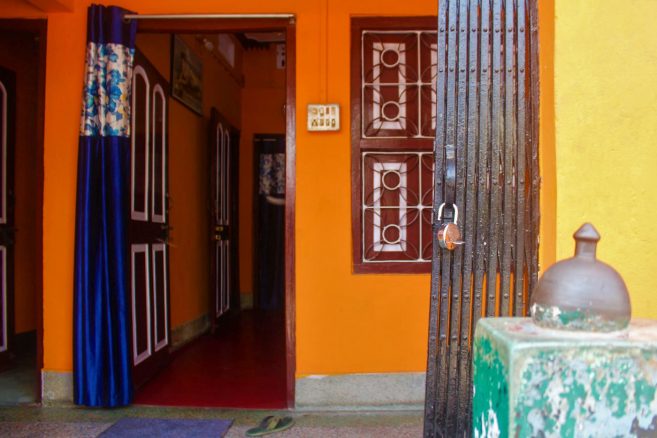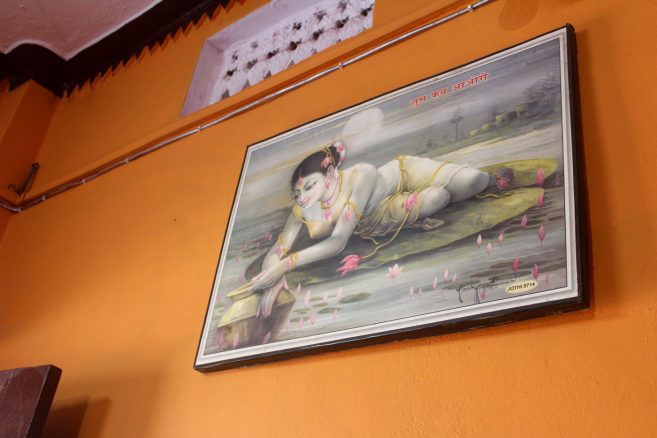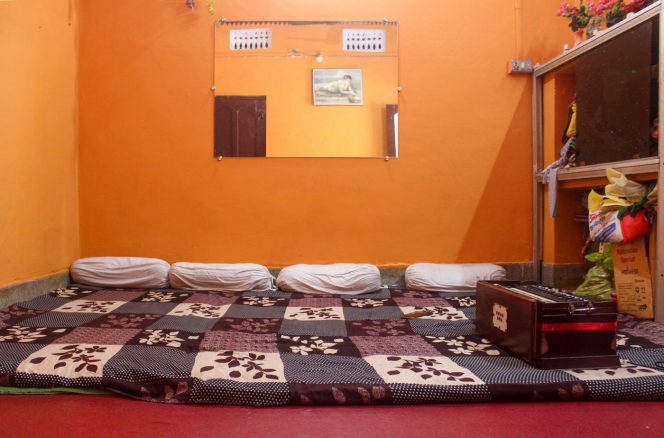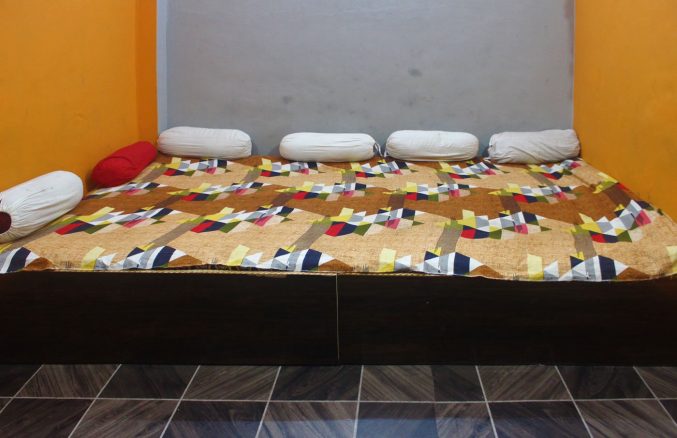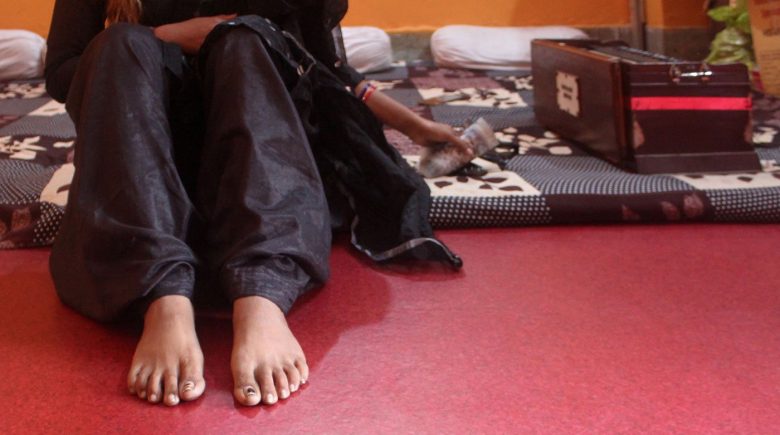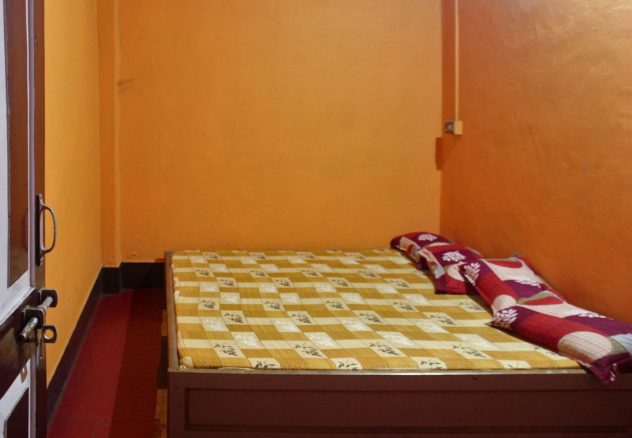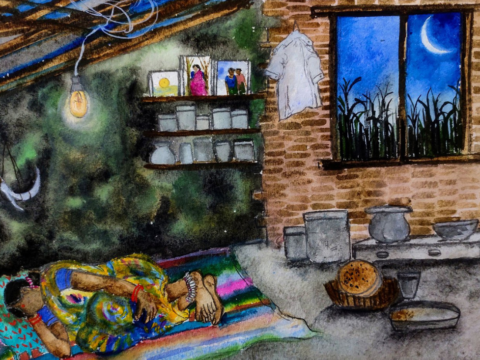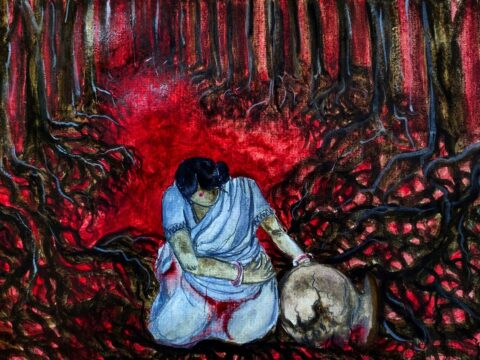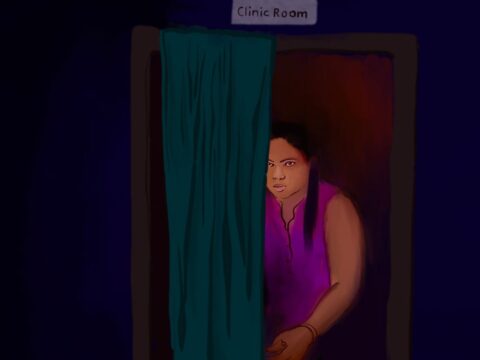
Sex workers in the Chaturbhuj Sthan brothel of Bihar’s Muzaffarpur district, who often go through pregnancies at an early age to please their ‘permanent’ clients, were badly hit by the Covid-19 lockdowns
“You’ve come here very early. On Sundays, they don’t come before 4 in the evening. I am here at this time because I am learning to play the harmonium,” says Beauty.
‘Here’ is Chaturbhuj Sthan, a very old brothel in Musahri block of Bihar’s Muzzafarpur district. ‘This time’ is just after 10 a.m., when she and I met ‘They’ are the clients who visit her in the evenings. And Beauty – her preferred name on the job – is a sex worker who, at 19, has already been in the trade five years. She is also three months pregnant.
And she is still working. She is also learning to play the harmonium because “Ammi [her mother] says the music will have a good effect on my baby.”
Her fingers moving across the harmonium keys as she speaks, Beauty adds, “This will be my second child. I already have a two-year-old son.”
Almost half the room we’re meeting in – at other times her workspace – is occupied by a very large mattress on the floor, behind which is a 6-by-4 feet mirror fixed horizontally on the wall. The room itself is perhaps 15 by 25 feet. The mattress is decorated with cushions and pillows for clients to sit or lean on as they watch the girls perform mujra, a dance form thought to have emerged in pre-colonial India. Chaturbhuj Sthan itself is said to have existed since Mughal times. All the girls and women in the brothel are required to know and perform mujra. Beauty certainly does.

All the sex workers in the brothel are required to know and perform mujra; Beauty is also learning to play the harmonium
The way here is through the main market of Muzaffarpur. Shopkeepers and rickshaw drivers help with directions, everybody knows where the brothel is located. The Chaturbhuj Sthan complex consists of scores of similar looking houses, 2 to 3 floors each, on both sides of a street. Women of various ages are standing outside these houses, a few others are sitting on chairs – waiting for clients. Wearing bright and very tight clothes, loud make-up and a whole lot of assumed confidence, each keeps a keen eye on passers-by.
However, Beauty says, the women we see here that day would be just 5 per cent of the total number of sex workers in the brothel. “See, like everyone else, we also take this one day off in a week. Though for us, it is just half a day off. We come to work by 4-5 in the evening and stay till 9 at night. On the other days, it’s 9 in the morning to 9 at night.”
*****
There are no official figures available, but the total number of sex workers in all of Chaturbhuj Sthan – sprawling to over a kilometre in length – could be more than 2,500. Beauty and others I speak to here say around 200 women in the trade reside in the section of the street we are in. Around 50 women working in this same section come in from outside the locality. Beauty belongs to that ‘outside’ group, which resides elsewhere in the city of Muzaffarpur.
Most of the houses in Chaturbhuj Sthan, she and others here tell us, are owned by women who have been in sex work for three generations or more. Like Amira, whose mother, aunt and grandmother passed on the business to her. “That’s how it works here. The rest of them have hired houses from the old ones and come only for work, unlike us,” says 31-year-old Amira. “For us, this is our home. The women from outside come from slums or even from families of rickshaw pullers or domestic workers. Some are even brought [trafficked or abducted] here,” she adds.
Abduction, poverty and being born in a family already in the trade are some of the causes that bring women into prostitution, notes a research paper published by the University Grants Commission. It speaks of the social and economic subordination of women by men as among the important overarching causes.
Most of the houses in Chaturbhuj Sthan are owned by women who have been in the business for generations; some of the sex workers reside in the locality, others, like Beauty, come in from elsewhere in the city
Do Beauty’s parents know of her work?
“Yes, of course, everybody does. I am continuing with this pregnancy only because of my mother,” she says. “I had asked her to let me abort. Bringing up one child without the father is enough, but she said this sin [abortion] is not practised in our religion.”
There are several girls here, even younger than Beauty, who are pregnant too or have already had children.
Reducing adolescent pregnancy, many researchers say, is one important strand of the sexual and reproductive health-related objectives implicit in the United Nations’ Sustainable Development Goals. Particularly SDGs 3 and 5, which are ‘Good Health and Well-Being’ and ‘Gender Equality.’ The hope is that these will be achieved by the year 2025, just over 40 months from now. But on the ground, the reality is daunting.
The United Nations Programme on HIV/AIDS estimated in its Key Population Atlas that in 2016 India had around 657,800 women in prostitution. However, a more recent submission in August 2020 of the National Network of Sex Workers (NNSW), to the National Human Rights Commission says that a conservative estimate would place female sex workers in the country at around 1.2 million. Of these, 6.8 lakhs (the number cited by UNAIDS) are registered female sex workers receiving services from the Ministry of Health and Family Welfare. The NNSW, founded in 1997, is a national network of sex worker-led organisations promoting the rights of female, transgender and male sex workers in India.
Each house has an outer room with a big mattress for clients to sit and watch the mujra; there is another room (right) for performing intimate dances
A boy around the same age as Beauty enters the room we are in, listens to us chatting, then joins in. “I am Rahul. I have worked here from a very young age. I help Beauty and some other girls by bringing them clients,” he says. Then he goes silent, offers no further information about himself, letting me and Beauty continue our conversation.
“I live with my son, mother, two elder brothers and father. I went to school till Class 5 but then I stopped. I never liked school. My father has a dibba [a tiny stall selling cigarettes, matches, tea, paan and other items] in the city. That’s all. I am not married,” says Beauty.
“My first child is from the man I love. He loves me too. At least that’s what he says,” Beauty giggles. “He’s one of my permanent customers [clients].” Many women here use the English word ‘permanent’ to indicate regular, long-term clients. Sometimes, they call them ‘partner’. “See, my first child was not planned. Nor was this pregnancy, obviously. But I continued both times because he asked me to. He said he’d bear all the expenses of the child and he kept his word on that. Even this time, he’s taking care of my medical expenses,” she says, with some satisfaction in her tone.
Like Beauty, in India, the National Family Health Survey-4 notes, 8 per cent of women in the 15-19 age group have begun childbearing. Around 5 per cent of women in the same age group have had at least one live birth and 3 per cent are pregnant with their first child.
Quite a few sex workers here avoid using any form of contraception when with their ‘permanent’ clients, says Rahul. On conceiving, they abort – or like Beauty, have the child. All to please the men they are involved with, in order to preserve a longer-lasting relationship with them.
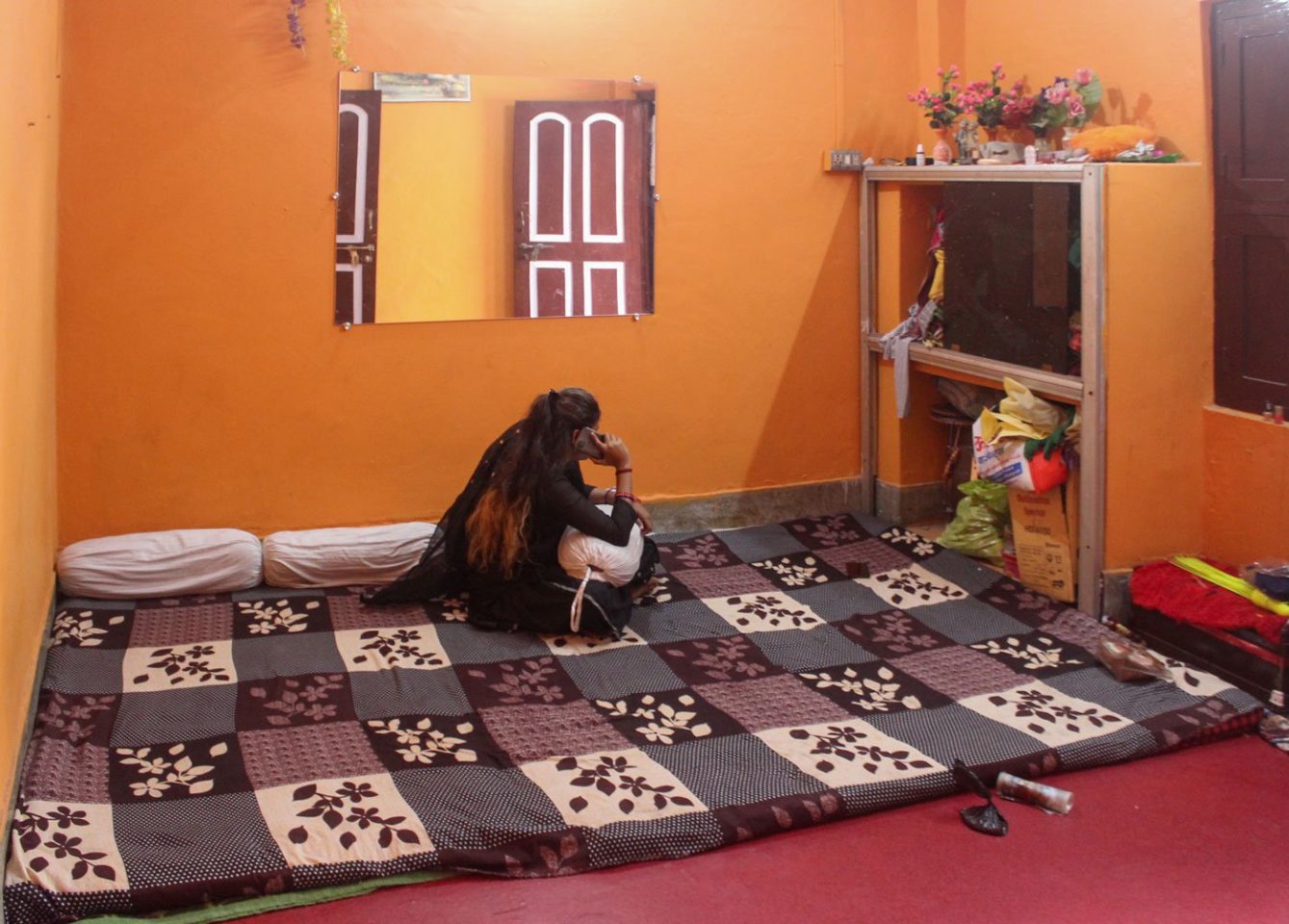
Beauty talks to her ‘permanent’ client: ‘My first child was not planned. Nor was this pregnancy… But I continued because he asked me to’
“Most of the clients do not come here with condoms,” Rahul says. “Then we [pimps] have to rush and get those from a shop. But at times these girls agree to go ahead without protection with their permanent partners. In that case, we do not interfere.”
The use of birth control methods by men across the country is very limited, says a report published by the Oxford University Press. Together, male sterilization and condom use was reported to be just 6 percent in 2015-2016 and have remained stagnant since the mid-1990s. The percentage of women reporting any form of contraception in 2015–2016 ranged from 23 percent in Bihar to 70 percent in Andhra Pradesh.
“We have been in love for around four years,” says Beauty of her partner. “But he recently got married under pressure from his family. He did it with my permission. I agreed. Why would I not? I am not a marriageable woman and he had never said that he would marry me. As long as my children live a good life, this is okay with me.
“But I get check-ups done every three months. I avoid the government hospital and go to a private clinic. Recently, I got the necessary tests (including HIV) done after I found I was pregnant a second time and everything is fine. At the government hospital, they treat us differently. They talk in a derogatory way and look down upon us,” says Beauty.
*****
Rahul goes to the door to speak to a man. “I had to ask the landlord for one week’s extension to pay this month’s rent. That was him asking for it,” he explains on returning. “We have taken his place on a rent of 15,000 rupees a month.” The houses in Chaturbhuj Sthan, as Rahul explains again, are mostly owned by older, sometimes elderly, women sex workers.
The younger women here learn the mujra from the older generation; a smaller inside room (right) serves as the bedroom
Most of them are no longer in the trade themselves and have rented out their places to pimps and younger sex workers. Sometimes, to a group of them. They rent out the ground floor and live on the first or second floor. “Some of them though have passed on the work to their next generation, to their daughters, nieces or granddaughters – and still live in the house,” says Rahul.
According to the NNSW, a significant proportion of sex workers (male, female and trans) work from home and arrange clients via mobile phones, independently, or through an agent. Many in Chaturbhuj Sthan seem to be in this work-from-home category.
All the houses here look alike. The main doors have iron grilles with wooden nameplates. These carry the name of the owner or the main woman functioning from that house. The names are followed by designations – such as Nartaki evam gayika (dancer and singer). And below these are their performance times – the most common being 9 a.m. to 9 p.m. Some boards read ‘11 a.m. to 11 p. m’. A few just say ‘Till 11 p.m’.
Most of these very similar looking houses have 2-3 rooms on a floor. Like in Beauty’s place, in every one of them a big mattress occupies most of the space in a living room, and behind that is a large mirror on the wall. The small remaining space is for mujra – this is essentially the room for the music-dance performances. The younger women here learn the mujra from the older generation professionals, sometimes by just watching and at times through instruction. There is a smaller room, perhaps 10 feet by 12, which serves as the bedroom. And a tiny kitchen.
“We have had some elderly clients pay even up to 80,000 rupees for one mujra show,” says Rahul. “That money, or whatever sum is paid, is divided between three ustaads [skilled musicians] we have – for tabla, sarangi and harmonium – the dancer and the pimp.” But such large payments, rare at the best of times, are now just a memory.

The entrance to a brothel in Chaturbhuj Sthan
Is Beauty earning enough in these tough times? ‘On lucky days, yes, but mostly no. This past year has been terrible for us. Even our most regular clients have been avoiding visits in this period. And those who did come, offered smaller amounts’
Is Beauty earning enough in these tough times?
“On lucky days, yes, but mostly no. This past year has been terrible for us,” she says. “Even our most regular clients have been avoiding visits in this period. And those who did come offered smaller amounts than usual. However, we have no choice but to accept whoever comes, whatever they pay, regardless of the risk of someone being a Covid carrier. Understand this: if one person gets the virus in this crowded brothel area, everyone’s life will be at risk.”
Beauty says she used to make Rs. 25,000 to 30,000 a month before the second wave of coronavirus hit India but now makes barely 5,000. The lockdowns following the second wave have made a hard life even more difficult for her and other sex workers here. And the fear of the virus looms large as well.
*****
The women of Chaturbhuj Sthan are unable to benefit from the Pradhan Mantri Garib Kalyan Yojana scheme, announced by the central government in March last year. Under that package, 200 million poor women were to get Rs. 500 each for three months. But it required them to be Jan Dhan account holders. Not a single woman of the several I spoke to in this brothel had a Jan Dhan account. In any case, as Beauty asks: “What could we do with 500 rupees, madam?”
The NNSW notes that sex workers routinely face difficulties while accessing identification documents such as voter, Aadhaar, and ration cards, or caste certificates. Many are single women with children who are unable to produce proof of residence anywhere. Or even show documents required for obtaining caste certificates. They are often denied ration relief packages provided by state governments.

Beauty looks for clients on a Sunday morning; she is three-months pregnant and still working
“When there is no help from the government even in the capital city of New Delhi, then you can imagine the situation in rural parts of the country where the policies and benefits anyway reach either late or never,” says Kusum, New-Delhi-based president of the All India Network of Sex Workers. There are many sex workers who are taking one loan after another to survive this pandemic.”
Beauty is winding up her practice session on the harmonium: “Younger age customers [clients] don’t like watching the mujra and wish to enter the bedroom straight away on arrival. We tell them it’s mandatory to watch the dance [which usually lasts for 30 to 60 minutes] even if for a short time. If not, how will we make money to pay for our team and house rent? We take at least 1,000 each from such boys.” The charges for sex are separate, she explains. “That is mostly on an hourly basis. It varies from client to client.”
It’s 11:40 a.m. and Beauty puts away the harmonium and opens her handbag to bring out a food packet with aloo paratha in it “I have to take my medicines [multivitamins and folic acid], so I better eat my breakfast now,” she says. “My mother cooks and packs it for me every time I come to work.”
“I expect a client this evening,” the three-months-pregnant Beauty adds. “Though getting a rich client is not so easy on Sunday evenings. The competition is tough.”
PARI and CounterMedia Trust’s nationwide reporting project on adolescent girls and young women in rural India is part of a Population Foundation of India-supported initiative to explore the situation of these vital yet marginalised groups, through the voices and lived experience of ordinary people.
Want to republish this article? Please write to zahra@ruralindiaonline.org with a cc to namita@ruralindiaonline.org
Jigyasa Mishra reports on public health and civil liberties through an independent journalism grant from the Thakur Family Foundation. The Thakur Family Foundation has not exercised any editorial control over the contents of this reportage.

